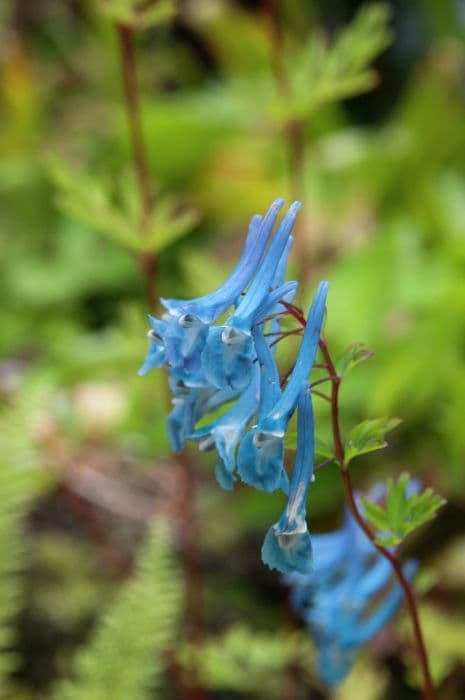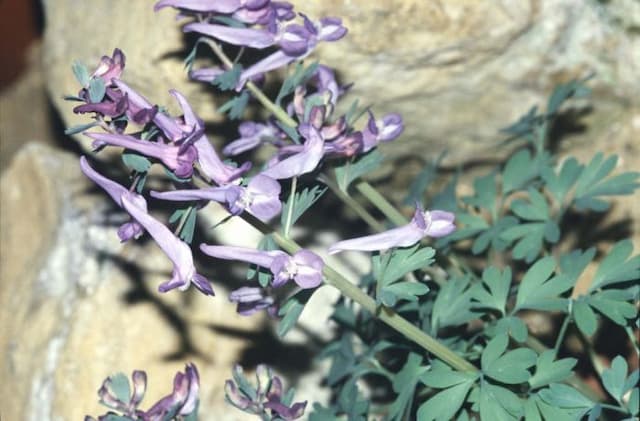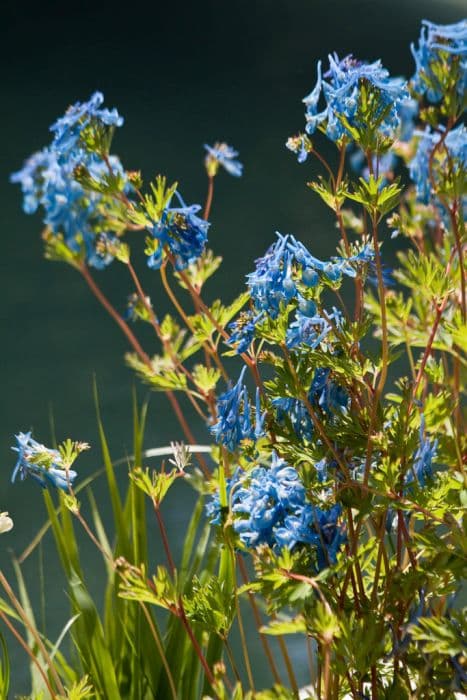Eschscholzia californica 'Appleblossom Bush' (Thai Silk Series)

ABOUT
The California poppy 'Appleblossom Bush' from the Thai Silk Series is a captivating addition to any garden, known for its unique floral display. This variant of the California poppy has breathtaking flowers that captivate onlookers. The petals exhibit a delicate, silky texture and boast a beautiful range of colors typically comprising soft pastel shades. The color of the blooms is reminiscent of apple blossoms, hence the name, with shades of delicate pinks, warm cream, and soft peach hues, often with a subtle mixture or gradient in individual flowers. The blooms, which unfurl from tightly packed buds, are composed of four petal-like structures arranged in an overlapping cup or bowl shape, giving an elegant and simple floral form. These blooms sit atop slender, branching stems that gently sway with the breeze. The foliage of the California poppy 'Appleblossom Bush' is equally attractive, characterized by finely divided, fern-like leaves that provide a beautiful backdrop to the stunning flowers. The leaves are typically a bluish-green hue, which contrasts strikingly with the soft colors of the blossoms, highlighting their beauty even further. Despite their delicate appearance, the flowers and plants are quite resilient and can lend an enchanting pop of color and texture to a variety of garden settings. This plant is adored not only for its ornamental appeal but also for the cheerful ambiance it brings to the landscape. Blooming throughout the growing season, the California poppy 'Appleblossom Bush' ensures a long-lasting and dynamic display that can be enjoyed over many months.
About this plant
 Names
NamesFamily
Papaveraceae.
Synonyms
California Poppy, Golden Poppy, Cup of Gold, Californian Poppy.
Common names
Eschscholzia californica 'Appleblossom Bush'.
 Toxicity
ToxicityTo humans
California poppy is generally considered to have low toxicity for humans. It is not known to be a commonly ingested plant, and there is limited information regarding its toxicity when eaten. In cases where humans have consumed parts of the California poppy, there have not been significant reports of serious poisoning or life-threatening symptoms. It's still advised to avoid eating this plant, as personal sensitivities can vary, and ingesting plants not intended for consumption is typically discouraged.
To pets
California poppy is not commonly listed as toxic to pets. However, as with any non-food plant, ingestion may lead to gastrointestinal upset or discomfort for pets, such as vomiting or diarrhea. It is always best to prevent pets from eating ornamental plants since their reactions can be unpredictable, and what is harmless to one animal might not be to another. If you suspect your pet has ingested a large amount of this plant and is showing symptoms of distress, please consult your veterinarian.
 Characteristics
CharacteristicsLife cycle
Annuals
Foliage type
Evergreen
Color of leaves
Blue-green
Flower color
Pink
Height
1 foot (0.3 meters)
Spread
1 foot (0.3 meters)
Plant type
Herb
Hardiness zones
8
Native area
California
Benefits
 General Benefits
General Benefits- Easy to grow: California Poppy is known for its low-maintenance requirements, making it ideal for novice gardeners as well as those who prefer low-effort gardening.
- Drought-tolerant: Once established, California Poppy can handle drought conditions, making it suitable for xeriscaping and water-conservation landscapes.
- Attracts pollinators: It is an excellent plant for attracting bees and butterflies to the garden, which helps in the pollination of plants and overall biodiversity.
- Colorful displays: California Poppy offers vibrant color with its distinctive flowers, enhancing the visual appeal of any garden space.
- Self-sowing: It can self-seed under the right conditions, creating a self-replenishing display without the need for extensive gardening efforts each year.
- Edible parts: Some parts are edible and can be used in culinary applications, though this should only be done with proper knowledge and caution.
- Resistant to pests: California Poppy is not prone to many diseases or pests, saving gardeners from the need to use chemical treatments.
- Adaptable to soil types: This plant can thrive in a variety of soil types, although it prefers well-draining conditions.
- Fast growth: California Poppy generally grows quickly, providing a fast payoff for those looking to add color to their garden in the short term.
- Ground cover: Its spreading habit makes it a good option for ground cover, which can prevent weeds from taking over the area.
 Medical Properties
Medical Properties- Anxiolytic effects: California poppy has been traditionally used to help relieve anxiety.
- Sedative properties: It is thought to promote relaxation and aid in sleep.
- Analgesic actions: California poppy contains compounds that may act as mild pain relievers.
- Antispasmodic properties: The plant has been used to alleviate muscle spasms and cramps.
 Air-purifying Qualities
Air-purifying QualitiesThis plant is not specifically known for air purifying qualities.
 Other Uses
Other Uses- The petals of California Poppy can be used as a natural dye for fabric, yielding a soft yellow or orange hue depending on the mordant used.
- California Poppy seeds can be added to spice mixes, bringing a nutty, slightly spicy flavor to various culinary dishes.
- The pollen from California Poppy is used in some cosmetics, such as body powders and blushes, for its natural color.
- Dried California Poppy plants can serve as a unique and delicate material for creating pressed flower art or botanical prints.
- The vibrant flowers can be used in photography and film to create a quintessential Californian wildflower scene.
- California Poppy can be planted in urban gardens to attract and support pollinators like bees and butterflies while providing a touch of natural beauty.
- The plant's ability to self-seed makes it useful for low-maintenance landscaping in suitable climates, as it can naturalize in an area over time.
- The plant's sturdy stems and pods can be incorporated into floral arrangements and bouquets, especially in dried form for long-lasting decoration.
- California Poppy's quick growth cycle can be utilized for educational purposes to teach children about the life cycle of plants.
- Due to its drought tolerance, California Poppy is often used in xeriscaping to conserve water in landscapes and gardens.
Interesting Facts
 Feng Shui
Feng ShuiThe California poppy is not used in Feng Shui practice.
 Zodiac Sign Compitability
Zodiac Sign CompitabilityThe California poppy is not used in astrology practice.
 Plant Symbolism
Plant Symbolism- Peace: The California poppy, which 'Appleblossom Bush' is a variety of, traditionally symbolizes peace. Its calming color and gentle appearance evoke a sense of tranquility.
- Rest: This flower is known to have a sedative effect, and thus represents rest and relaxation. It has been used in herbal remedies to alleviate sleep-related issues.
- Resilience: As the state flower of California, it symbolizes resilience for thriving in arid conditions and the ability to stand strong in the face of adversity.
- Beauty: The delicate beauty of the California poppy, with its pastel-like colors and soft structure, stands for appreciation of natural beauty.
 Water
WaterThe California poppy, or Eschscholzia californica 'Appleblossom Bush', should be watered deeply yet infrequently, allowing the soil to dry out slightly between waterings. Ideally, water the plant with about 1 to 1.5 gallons per square yard every week during active growth in the spring and early summer. Reduce watering frequency as the plant approaches dormancy in late summer and fall. Over-watering or allowing the plant to sit in soggy soil can lead to root rot, so good drainage is important. In hotter climates, additional watering may be needed to keep the soil lightly moist but not waterlogged.
 Light
LightThe California poppy thrives in full sun, where it can receive at least 6 to 8 hours of direct sunlight a day. It's best planted in a location where it's exposed to unfiltered sunlight throughout the day, as this will promote the healthiest growth and most abundant flowering. Light shade may be tolerated, but it will result in fewer blooms and a less robust plant.
 Temperature
TemperatureThe California poppy is well-adapted to a range of temperatures and can endure a minimum temperature of about 10 degrees Fahrenheit, though frost may damage the foliage. It performs best in temperate climates where temperatures range between 50 to 85 degrees Fahrenheit. This plant is quite heat-tolerant and can survive high temperatures, but extreme heat may stress the plant, particularly if combined with high humidity.
 Pruning
PruningPruning the California poppy involves deadheading spent flowers, which encourages further blooming. Pruning can take place throughout the blooming season to maintain the plant's appearance and vigor. No extensive pruning is required; simply pinch off the faded blooms. The best time for pruning is late summer or early fall, to prepare the plant for dormancy and to prevent self-seeding if not desired.
 Cleaning
CleaningAs needed
 Soil
SoilCalifornia Poppy thrives in well-draining soil with a mixture of sand, loamy soil, and compost. It prefers a slightly acidic to neutral soil pH ranging from 6.0 to 7.5, which facilitates nutrient uptake and healthy root development.
 Repotting
RepottingCalifornia Poppies are typically grown as annuals and do not usually require repotting. If grown as perennials in containers, repot every 2-3 years to refresh the soil and provide room for growth.
 Humidity & Misting
Humidity & MistingCalifornia Poppy does well in moderate humidity levels and is tolerant of dry conditions, making it suitable for typical outdoor environments without specific humidity requirements.
 Suitable locations
Suitable locationsIndoor
Use bright light, well-draining soil, and scant moisture.
Outdoor
Full sun, well-drained soil, and minimal watering.
Hardiness zone
6-10 USDA
 Life cycle
Life cycleThe life of the California poppy 'Appleblossom Bush' from the Thai Silk Series begins with germination, where seeds planted in well-draining soil and exposed to sunlight and warmth sprout in 14-21 days. Following germination, seedlings rapidly develop true leaves and a root system, entering the vegetative growth stage where they focus on producing foliage and establishing a strong foundation for future blooming. This cultivar typically starts flowering in late spring or early summer depending on local climate conditions, showcasing a profusion of delicate pink and white petals. Peak blooming can last several weeks to months, with individual flowers being ephemeral, often closing at night or on cloudy days. As flowers fade, the plant sets seed in slender pods that dry and eventually open, dispersing seeds for the next generation. During fall or when conditions turn unfavorable, the California poppy 'Appleblossom Bush' enters dormancy or dies back, especially in colder climates, completing its life cycle.
 Propogation
PropogationPropogation time
Spring
The most popular method of propagating California Poppy, specifically the 'Appleblossom Bush' from the Thai Silk Series, is by seed. Seed propagation is ideally done in early spring after the risk of frost has passed. To propagate, seeds should be sown directly into well-drained soil at a depth of about 1/16 inch (approximately 1.6 millimeters), as California Poppy seeds need light for germination. Thinning the seedlings is essential once they've established to allow for proper growth. You can also start seeds indoors 6 to 8 weeks before the last frost date, but these plants have a taproot system that can be disturbed by transplanting, so sowing directly is typically preferred.









